Jagannath Festivals

Snana Yatra
22 June 2024
The Snana Yatra, a dazzling Hindu festival, is the bathing ceremony of Lord Jagannath and his siblings, Baladeva and Subhadra, held on Jyestha Purnima, the full moon day of the Jyestha month. This vibrant celebration signifies purification, washing away impurities to prepare the deities for their grand chariot journey. It marks the exciting start of preparations for the Rath Yatra, a spectacular procession where the deities travel through the streets of Puri on colossal chariots.
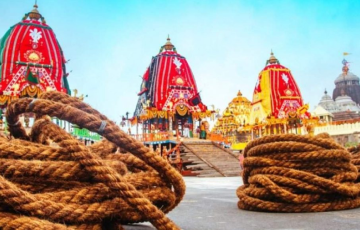
Ratha Yatra or Sri Gundicha Yatra
07 July 2024
While Ratha Yatra, the “Festival of Chariots,” is the grand spectacle of deities parading through Puri on colossal chariots, Sri Gundicha Yatra refers specifically to their journey and temporary residence. During Ratha Yatra, the deities embark on this symbolic outing, but Sri Gundicha Yatra focuses on their stay at the Gundicha Temple, roughly 3 kilometers away. This specific period holds its own significance, with daily rituals and the famous “Hera Panchami” ceremony where devotees witness the dramatic arrival of Subarna Mahalakshmi, believed to be Lord Jagannath’s wife.

Sri Hari Sayan
27 July 2024
Following the grandeur of Ratha Yatra comes Sri Hari Sayan, a period of introspective calm observed on Ashadha Ekadashi. On this holy day, devotees mark Lord Jagannath’s slumber. A peaceful procession carries him to the seclusion of the Jagannath Temple, where he rests for four months. This symbolic sleep, known as Chaturmas, is a time for renewal and spiritual reflection. It signifies a pause before the vibrant cycle of festivals resumes, allowing devotees to contemplate the deeper meanings of these rituals and prepare for the celebrations to come.
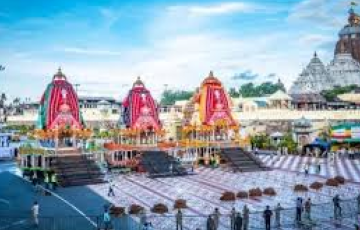
Utthapan Yatra
==========
Following Sri Hari Sayan’s peaceful slumber, devotees eagerly await Utthapan Yatra, the joyous awakening of Lord Jagannath! This festival, celebrated on Ashadha Shukla Ekadashi (the eleventh waxing moon of the Ashadha month), marks the end of the four-month Chaturmas period. A special ceremony rouses the Lord from his symbolic sleep, signifying renewal and the beginning of preparations for upcoming festivities. Temple rituals transform, incorporating sacred awakenings baths and offerings. Devotees rejoice, eager to reconnect with their awakened deity and witness the vibrant celebrations to come. This day ignites anticipation for the next chapter in the cycle of Jagannath Temple festivals.
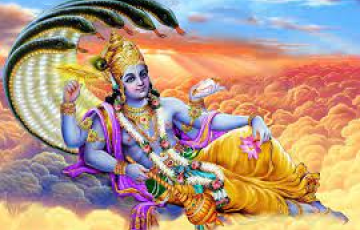
Parswa Paribartan
14 september 2024
Parswa Paribartan, also known as Parivartini Ekadashi, isn’t a standalone festival but a significant event within the introspective Chaturmas period. On this specific Ekadashi, the eleventh lunar day, a fascinating belief comes into play. Lord Vishnu, who is said to be in yogic sleep during Chaturmas, is believed to change his sleeping position. This isn’t mere symbolism; it signifies a turning point in the four-month cycle. Devotees observe this day with special focus, recognizing it as a halfway mark between the commencement of Chaturmas’ inward reflection and the eventual awakening of Lord Jagannath during Utthapana Yatra. The observance of Parswa Paribartan highlights the cyclical nature of the divine and the universe, reminding us that periods of rest and renewal pave the way for future activity and growth.
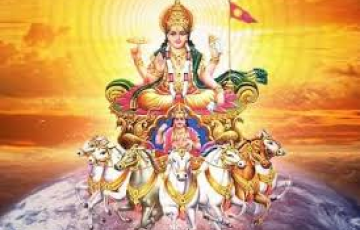
Dakhinayan Yatra
16 july 2024
Unlike the vibrant processions of Ratha Yatra, Dakshinayan Yatra is a subtler observance. It coincides with a celestial event – the sun’s southward movement, marking the beginning of Dakshinayana. While not a grand festival itself, Dakshinayan Yatra holds significance for devotees. It’s believed that Lord Jagannath grants a special darshan (holy viewing) on this day, showering his blessings upon those who seek them. To commemorate this occasion, devotees participate in the Dakshinayan Bandapana ceremony. This special puja (worship) ritual allows them to express their gratitude and receive the divine grace believed to be particularly potent during Dakshinayana. The day serves as a quiet reminder of the interconnectedness between the divine and the natural world, where even celestial movements hold spiritual significance.
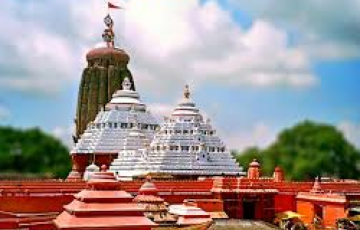
Prarbana Yatra
==========
Prarbana Yatra stands as a fascinating prelude to the grandeur of Puri’s Ratha Yatra. Unlike its flamboyant counterpart, details surrounding Prarbana Yatra are scarce. Whispers suggest it might be a chariot-related ritual, a pre-cursor to the elaborate chariot construction that defines Ratha Yatra. Perhaps it signifies the selection of special wood, the commencement of the carpentry work, or even the blessing of the tools to be used. This obscurity adds to the intrigue. Prarbana Yatra might be a quiet dedication, a whispered promise to the deities that their chariots are soon to take form. Its very existence hints at the meticulous planning and devotion that goes into the iconic Ratha Yatra, making Prarbana Yatra a hidden gem waiting to be fully understood.

Pusyavishek
Feb 11th and 12th, 2024
Inscribed within the introspective Chaturmas period lies Pusyavishek, another name for Pausha Shukla Ekadashi. This auspicious day transcends a mere calendar entry, transforming into a sacred bath for Lord Jagannath. Imagine a ceremonial abhishek (pouring) where fragrant sandalwood paste and an array of medicinal herbs are meticulously combined. This potent concoction isn’t just water; it’s a symbol of purification and rejuvenation. As the holy mixture cascades over the deity, devotees witness the washing away of impurities, both physical and metaphorical. Pusyavishek signifies a turning point within Chaturmas, a moment of renewal that prepares Lord Jagannath for the cycle of festivals to come. It’s a testament to the meticulous rituals that orchestrate the divine year within the Jagannath Temple, reminding us of the importance of cleansing and rejuvenation on both the earthly and spiritual planes .
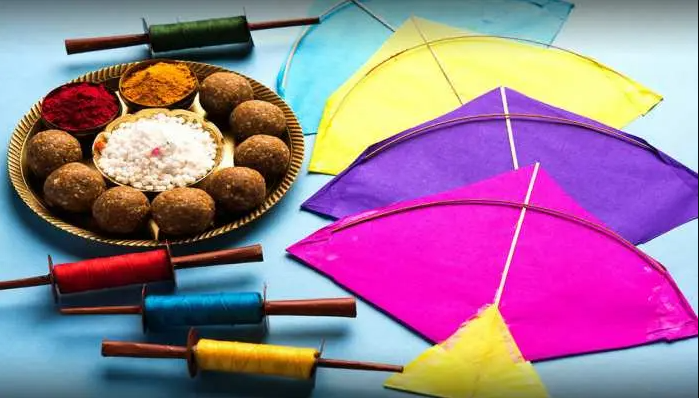
Uttarayan
15 Jan 2024
Uttarayan, also known as Makar Sankranti, heralds the arrival of spring with a vibrant explosion of color and joy. Celebrated on the day the sun enters the zodiac sign Capricorn (Makara), it marks a celestial shift and the end of the winter chill. Farmers rejoice as the harvest season reaches its peak, their granaries overflowing with bounty. The festivities are a kaleidoscope of sights and sounds. Skies come alive with colorful kites, their intricate designs dancing on the wind as communities gather on rooftops to compete in friendly battles. Crackling bonfires ( अलाव / alaav) ward off the lingering winter cold and symbolize the burning away of negativity. Sweet treats like til laddus, prepared with sesame seeds and jaggery, are exchanged, a delightful reminder of the season’s bounty. Uttarayan is more than just a harvest festival; it’s a celebration of hope and renewal.

Dola Yatra
25 Mar 2024
Dola Yatra, a riot of color and joyous revelry, explodes onto the scene on the full moon of Falgun, marking the exuberant swing festival dedicated to Radha and Krishna. Imagine vibrant processions winding through streets, the rhythmic sway of devotees carrying swings adorned with colorful fabrics and flowers. The air hangs thick with the sweet scent of spring and the playful energy of devotees showering each other with colored powder. Dola Yatra isn’t just a celebration; it’s a symbolic portrayal of the divine love story between Radha and Krishna. The playful swings represent their eternal romance, while the vibrant colors and joyous spirit embody the blossoming of spring. As devotees partake in the festivities, they rejoice in the end of winter’s harsh grip and welcome the season of renewal. Dola Yatra is a testament to the enduring power of love, reminding us that joy and hope triumph even in the face of colder times.

Damanak Chaturdasi
22 APR 2024
Damanak Chaturdasi, observed on the 14th day of the waxing moon in Chaitra, is a regional gem celebrated with specific fervor in Odisha and pockets of North India. Unlike the grand, public festivals of the Jagannath Temple, Damanak Chaturdasi holds a more intimate, local significance. Devotees gather to perform special pujas, offering prayers and seeking blessings from the divine. The day is often associated with the appearance of Goddess Hingula, a powerful deity believed to manifest as the sacred fire within the kitchen of the Jagannath Temple in Puri. Legends abound, with some suggesting devotees pay homage to the Goddess at a specific temple near Talcher, Odisha, on this day. This rich tapestry of local beliefs and rituals imbues Damanak Chaturdasi with a unique charm, making it a fascinating glimpse into the regional variations of Hinduism.
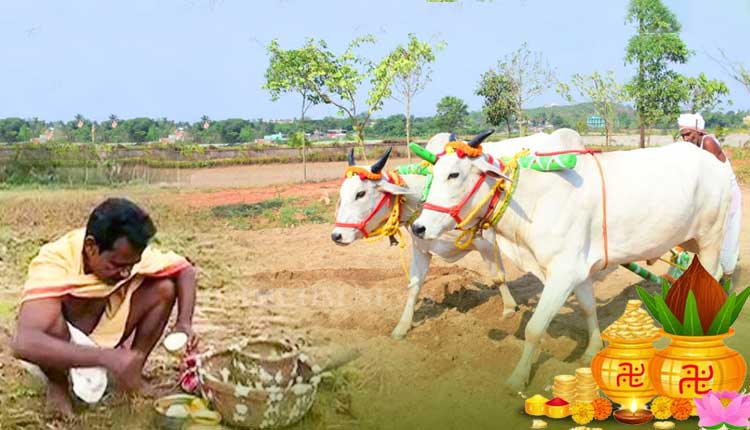
Akshaya Tritiya
10 May 2024
Akshaya Tritiya, literally translating to “the third day of the imperishable” in Sanskrit, is a day steeped in the promise of endless prosperity. Falling on the third lunar day of the Vaishakha month, it’s considered an astrologically potent time to usher in an era of abundance. The belief is that any new beginnings embarked upon on this day, be it a business venture, a personal endeavor, or even a charitable act, will be blessed with enduring success and ever-growing returns. This potent symbolism fuels the vibrant energy of Akshaya Tritiya. Markets teem with activity as people throng to purchase gold – a traditional symbol of wealth and permanence. Investment decisions are carefully considered, hoping to leverage the auspicious aura of the day. Elaborate pujas (worship rituals) fill homes and temples, seeking blessings from the divine for a life overflowing with prosperity. Akshaya Tritiya transcends a mere calendar date; it’s a powerful confluence of tradition, faith, and the yearning for a life enriched by both material and spiritual abundance.
